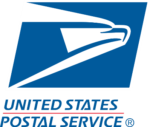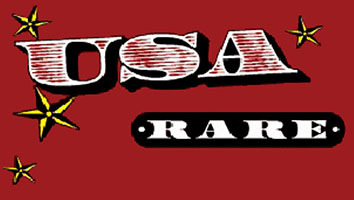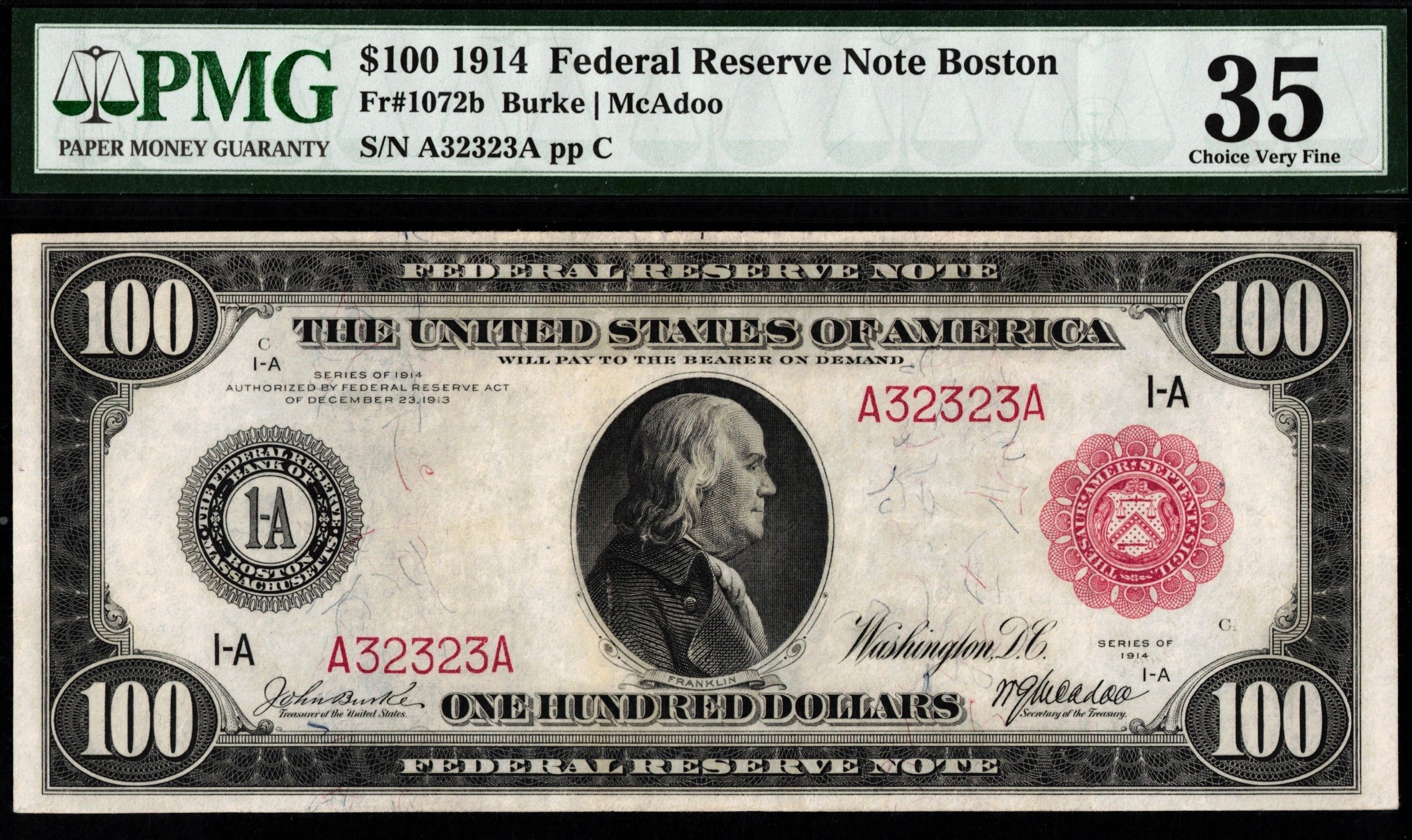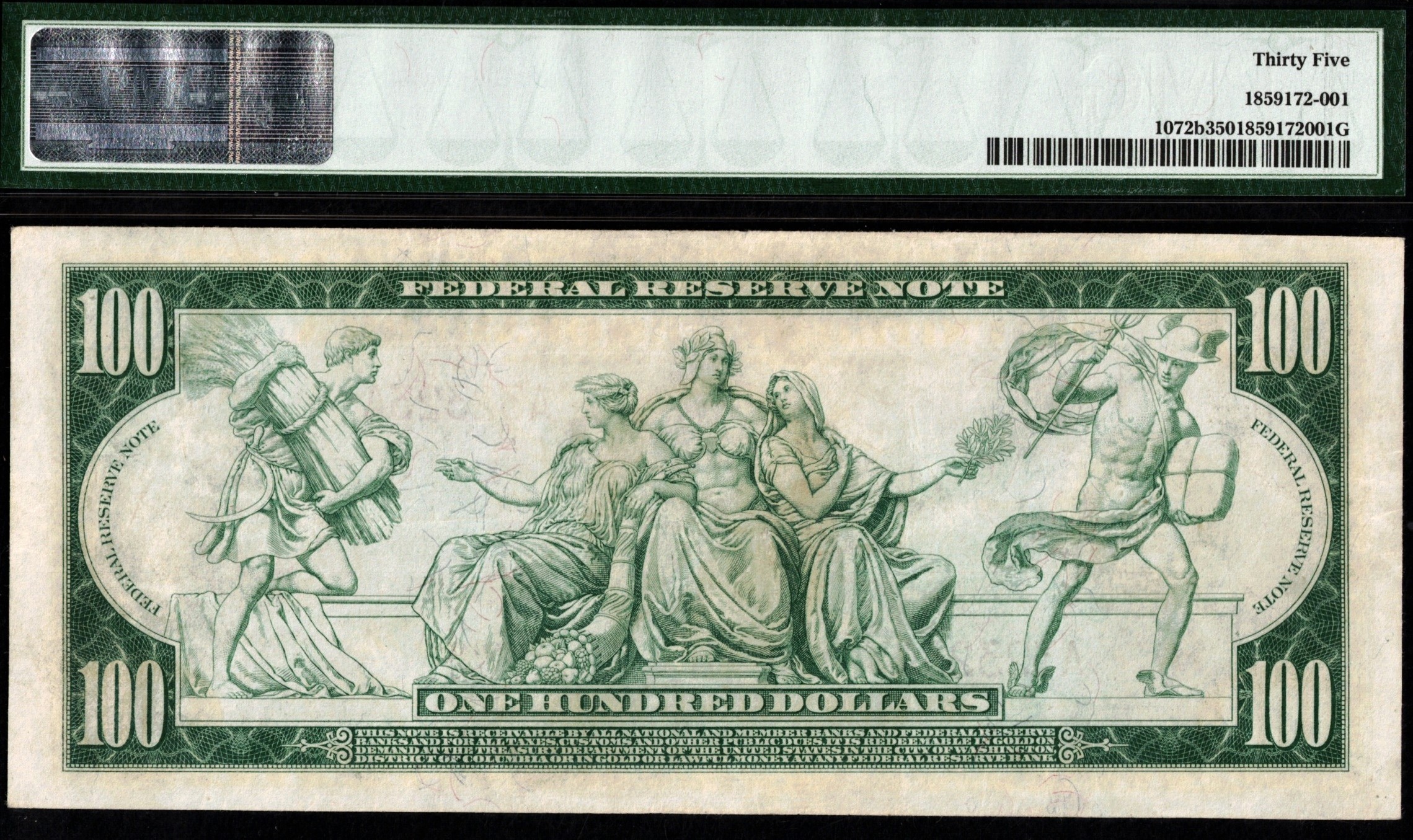Description
Fr-1072-B 1914 Series One Hundred Dollar Federal Reserve note coming from the Boston District. The plate that was used for this example is #B. Just one of #13 graded at P.M.G. The highest grade to date……. is this example. Top pop note. All #13 graded at P.M.G do not have the EPQ qualifier added. Either does this one.
Third party graded P.M.G #35 Very fine to extra fine grade. “No comments listed on the holder” Nearly extra fine grade…… this note has wonderful centering, and color and shows a spectacular serial number. A mini radar. A32323A. Just threes and twos. Signatures are Burke and McAdoo.
P.M.G TOTAL GRADED #13 NONE HIGHER
Info on OVERPRINT Seal and Serial numbers
Letter from Assistant Treasury Secretary William P. Malburn dated July 8, 1915, explained that the red ink was prone to fading when exposed to moisture whereas the blue ink withstood testing without these issues. Following Malburn’s recommendation the Federal Reserve Board approved the change and referred it to a committee headed by the Secretary of the Treasury and the Comptroller of Currency which approved the change on August 9, 1915.
Today such Red Seal notes remain anywhere from scarce to rare on the open market. The $5, $10, $20 denominations can be found with relative ease while the $50s and $100s are a rare sight even in inventories of established dealers and auction houses. Notes from various districts and of differing Friedberg numbers see significant variations in rarity and value. For instance, a $20 from Atlanta stands to recognize a stronger premium than one from New York. Overall, the Series of 1914 Federal Reserve Notes mark a fascinating and often underappreciated chapter in the history of American paper money and offer many rarities deserving of collector interest.
Free USPS Standard Shipping. 14 day return policy – no questions asked. Satisfaction truly is our promise.





